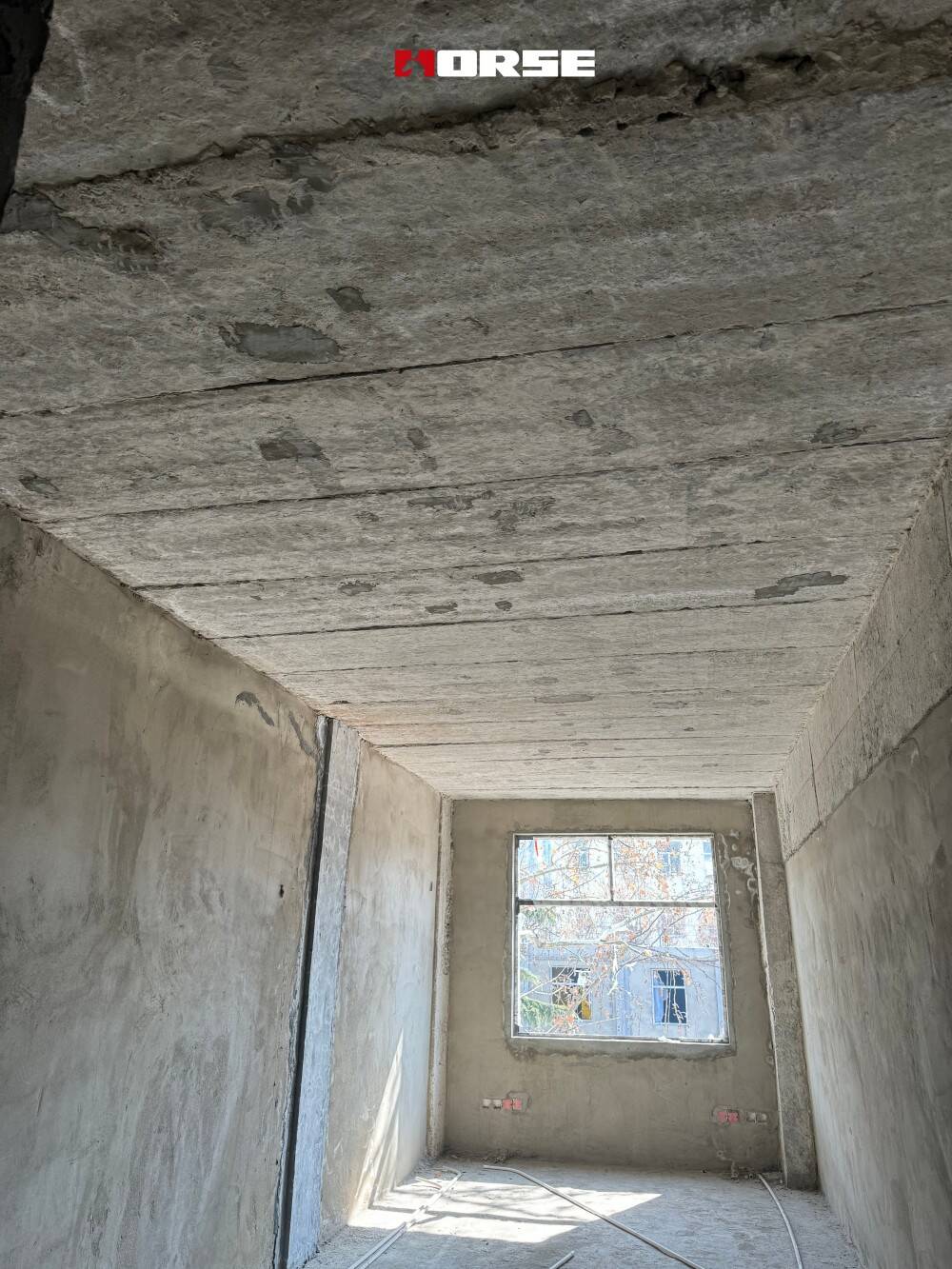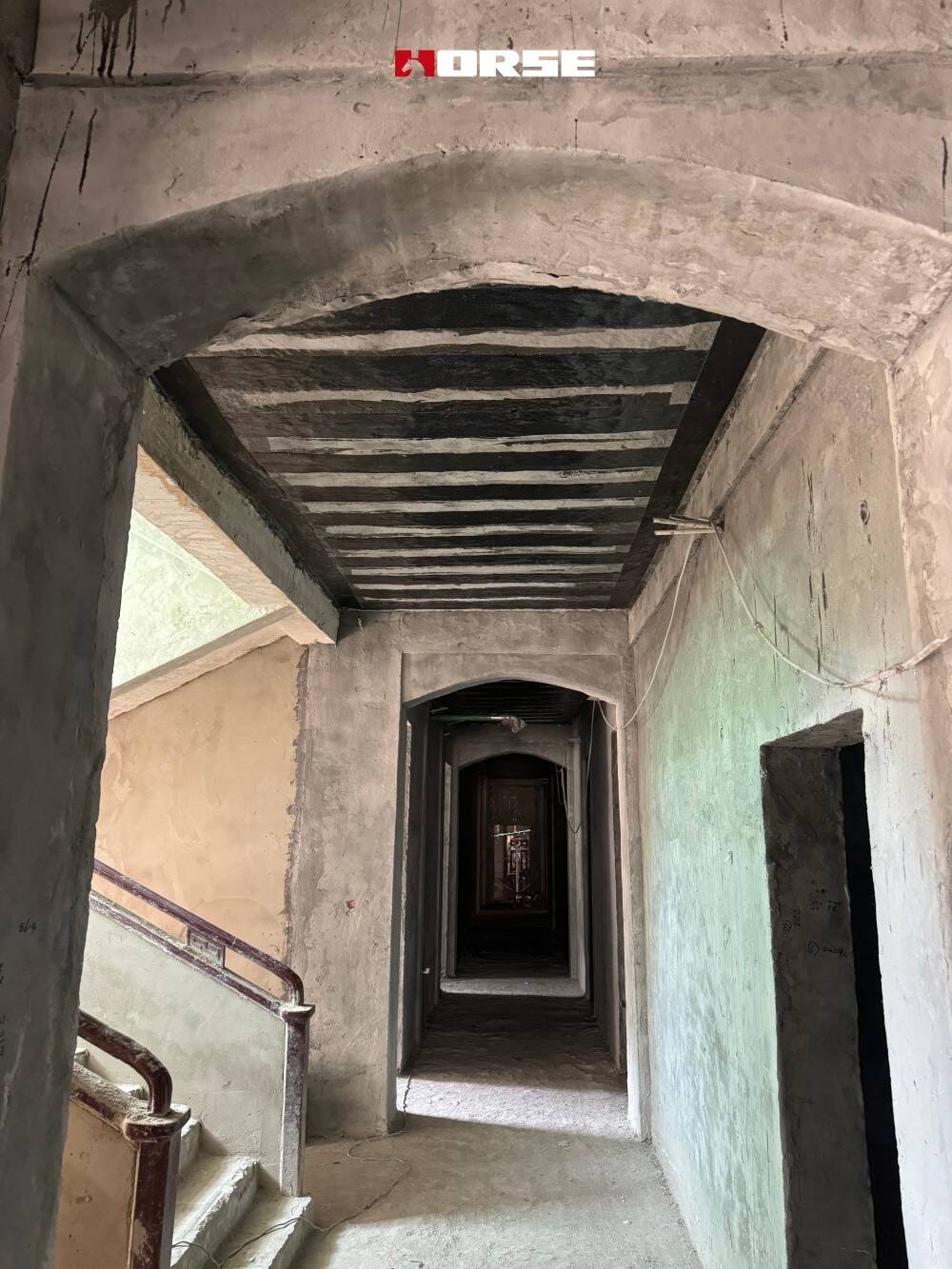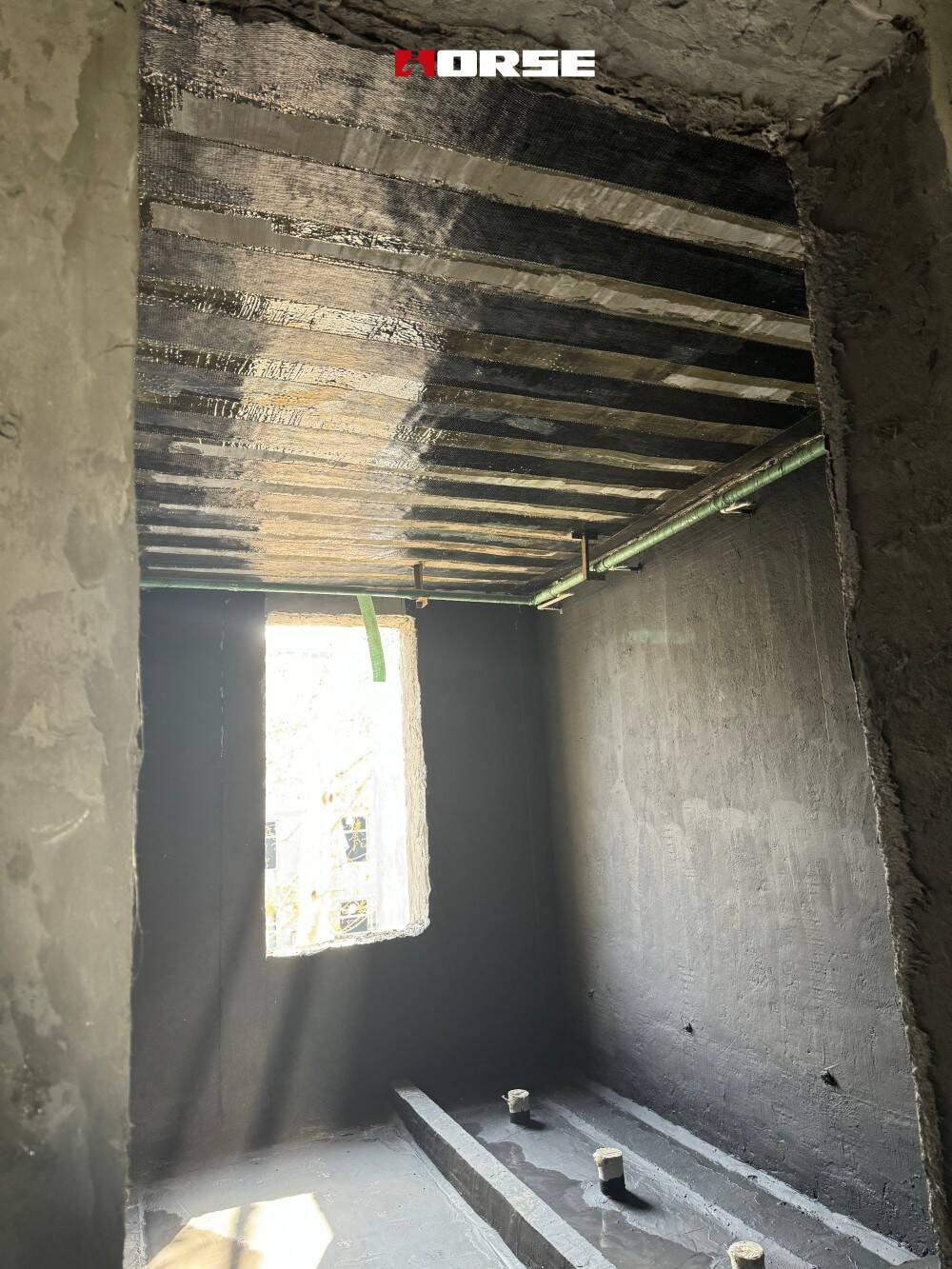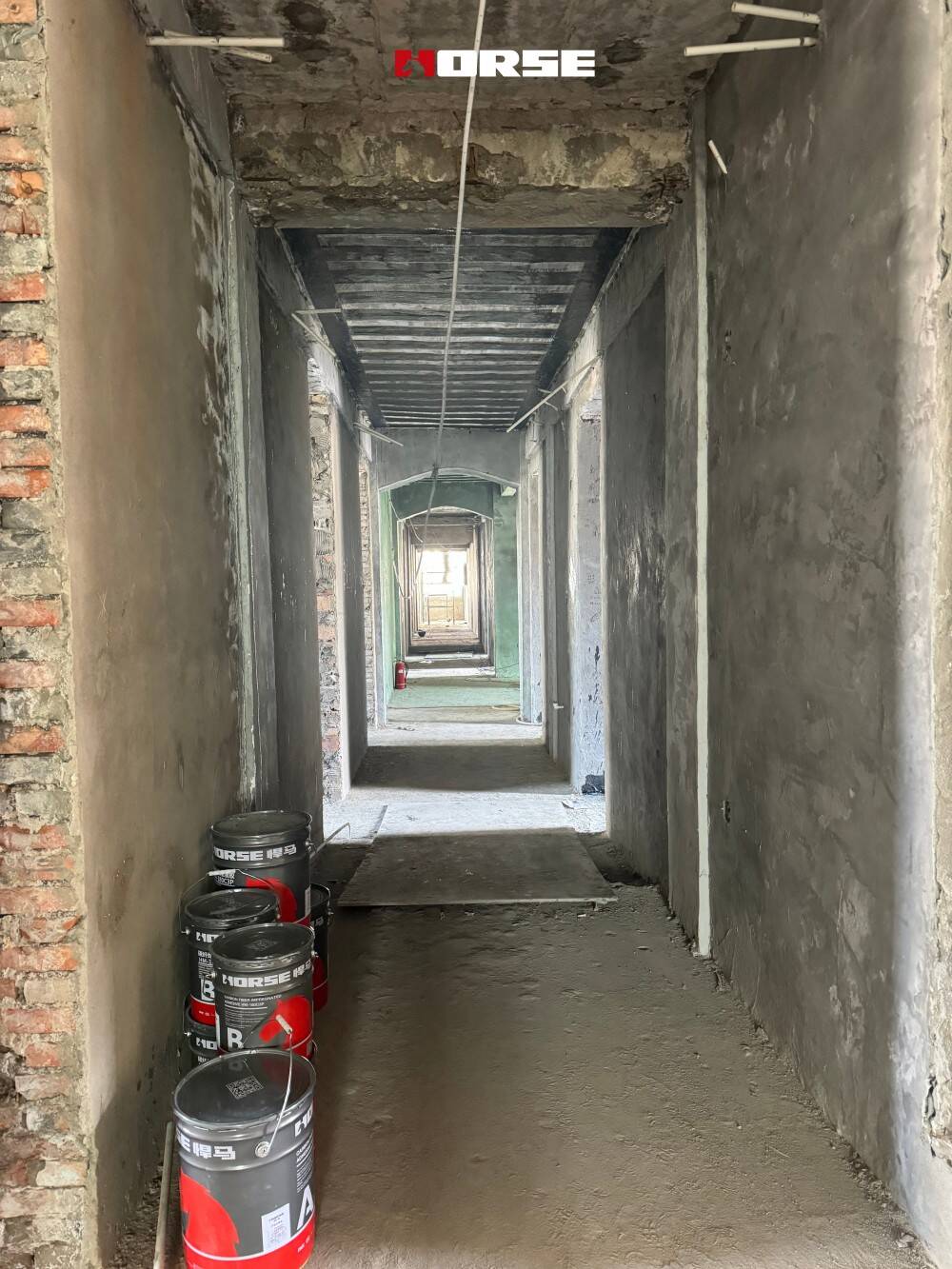Carbon Fiber Renovation
Brick Concrete Office Building
Carbon fiber reinforcement and renovation of brick concrete structure office building

1、 Project Overview
(1) Basic building information
The office building is located in Yanta District, Xi'an City, Shaanxi Province. It was built in 1995 and is a 5-story brick concrete structure with a total construction area of approximately 3000 square meters. The floor plan of the building is rectangular, and the floor slabs are mainly prefabricated hollow slabs and cast-in-place concrete slabs. Due to long-term disrepair and functional adjustments, reinforcement and renovation are needed.
(2) Testing and evaluation situation
After inspection by a professional testing agency, it was found that there were multiple cracks in the floor slab, with a large depth of carbonation in the concrete and rusting of steel bars in some areas. The bearing capacity has significantly decreased and can no longer meet current standards and new usage requirements.
2、 Determination of reinforcement plan
(1) Basis for scheme selection
Considering the characteristics of brick concrete structures and the current situation of floor slabs, after comparing various schemes such as increasing the section method, bonding steel reinforcement method, carbon fiber reinforcement method, etc., due to the advantages of light weight, high strength, corrosion resistance, convenient construction, and minimal impact on the original structure of carbon fiber reinforcement, it was ultimately decided to use carbon fiber reinforcement technology to reinforce the floor slabs.
(2) Selection of carbon fiber materials
Choose 300g/㎡ carbon fiber cloth, with a standard tensile strength of not less than 3400MPa and an elastic modulus of not less than 2.3 × 10 ⁵ MPa. The positive tensile bond strength of the matching impregnated adhesive should not be less than 2.5MPa, and the failure mode should be cohesive failure of concrete to ensure good bonding with concrete.
(3) Reinforcement design
Prefabricated hollow slab reinforcement: For prefabricated hollow slabs, carbon fiber cloth is pasted along the span direction at the bottom of the slab, with a spacing of 200mm, to enhance its bending bearing capacity. At the support of the board, add U-shaped carbon fiber hoops for anchoring, with a width of 150mm and a height of 2/3 of the board thickness.
Reinforcement of cast-in-situ concrete slab: For cast-in-situ concrete slabs, carbon fiber cloth is pasted in both directions at the bottom of the slab according to the stress situation and crack distribution of the slab. The spacing between carbon fiber cloth in the short span direction is 150mm, and the spacing in the long span direction is 200mm. For areas with a crack width greater than 0.2mm, seal them with sealant first, and then apply carbon fiber cloth.

3、 Construction process
(1) Construction preparation
Technical preparation: Organize construction personnel to familiarize themselves with reinforcement design drawings and relevant specifications and standards, conduct technical disclosure, clarify construction process flow, quality requirements, and safety precautions.
Material and equipment preparation: Purchase carbon fiber cloth, impregnated rubber and other materials according to the plan, and strictly inspect the quality after entering the site. Prepare construction equipment such as angle grinders, hair dryers, roller brushes, scrapers, scissors, etc., and ensure their good performance.
On site preparation: Clean up debris and dust on the surface of the floor slab, remove obstacles that affect construction, and build necessary operating platforms and safety protection facilities.
(2) Concrete surface treatment
Polish the concrete surface of the floor slab with an angle grinder to remove loose layers, oil stains, floating slurry, etc., exposing a solid base layer on the surface. The polishing thickness is about 2-3mm.
For existing cracks, the pressure injection method is used to inject sealant for repair. When the crack width is less than 0.2mm, surface sealing method is used to treat it, and structural adhesive is used to seal the crack.
Clean the dust generated by polishing with a hair dryer or vacuum cleaner to ensure the cleanliness of the concrete surface.
(3) Carbon fiber cloth pasting
Cutting carbon fiber cloth: Accurately cut carbon fiber cloth according to the size and shape required by the design, ensuring a flat surface and neat edges during cutting to avoid burrs.
Brushing bottom layer adhesive: Mix the main agent and curing agent of the impregnating adhesive evenly according to the specified ratio, and use a roller brush to evenly coat the surface of the treated floor concrete. The thickness of the adhesive layer should be controlled at 0.2-0.3mm, and wait for finger touch drying (usually 1-2 hours, adjusted according to the ambient temperature) before proceeding to the next step of construction.
Paste carbon fiber cloth: evenly apply impregnating adhesive on the carbon fiber cloth, then paste the carbon fiber cloth on the predetermined position of the floor surface. Use a scraper to repeatedly roll along the fiber direction to remove bubbles, so that the carbon fiber cloth is tightly adhered to the concrete surface, and the impregnating adhesive fully infiltrates the carbon fiber cloth. When pasting multiple layers, repeat the above steps, and the pasting of the upper layer of carbon fiber cloth should be carried out after the lower layer of impregnated adhesive is dried by touch.
End anchoring treatment: At the end of the carbon fiber cloth, U-shaped hoops or other anchoring measures are strictly pasted according to the design requirements to ensure reliable anchoring of the carbon fiber cloth and prevent it from peeling off under stress.

(4) Quality inspection
Appearance inspection: Check whether the carbon fiber cloth is pasted smoothly, and whether there are defects such as wrinkles, hollows, bubbles, etc. When the hollow area does not exceed 10000mm ², the method of injecting glue through a needle tube can be used for treatment; When the hollow area exceeds 10000mm ², the carbon fiber cloth at the hollow area should be cut off and an equal amount of carbon fiber cloth should be reattached.
Adhesive strength test: Conduct a tensile adhesive strength test by sampling according to regulations. Cut a square sample with a side length of 20mm from the already pasted carbon fiber cloth and conduct a pull-out test. The test results should meet the design and specification requirements.
4、 Construction difficulties and solutions
(1) There is a significant difference in the flatness of the floor slab
Due to the fact that the office building is an old building, there is a significant difference in the flatness of the floor slabs, which makes it difficult to stick carbon fiber cloth. The solution is to use repair glue to level the areas with significant flatness deviation, ensuring that the flatness deviation of the bonding surface is within ± 2mm, and ensuring a good fit between the carbon fiber cloth and the concrete.
(2) Restricted construction space
The internal space of the office building is limited, and some equipment in certain areas has not been completely removed, resulting in narrow construction operation space.

5、 Reinforcement effect evaluation
(1) Load test
After the reinforcement construction is completed and the structural adhesive reaches the design strength, a load test shall be conducted on the reinforced floor slab. Simulate normal usage loads and observe the deformation and crack propagation of the floor slab under 1.2 and 1.5 times normal usage loads. The test results show that under normal usage load and 1.2 times normal usage load, the deformation and crack width of the floor slab meet the requirements of the specifications; Under 1.5 times the normal usage load, there were no obvious signs of damage to the floor slab, and the bearing capacity was significantly improved.
(2) Long term monitoring
After the office building is put into use, long-term monitoring points will be set up to regularly monitor parameters such as deformation and stress of the floor slabs. After one year of monitoring, all parameters remain stable without any abnormal changes, indicating that the carbon fiber reinforcement effect is good, effectively improving the bearing capacity and durability of the floor slab, and meeting the new usage needs of office buildings.